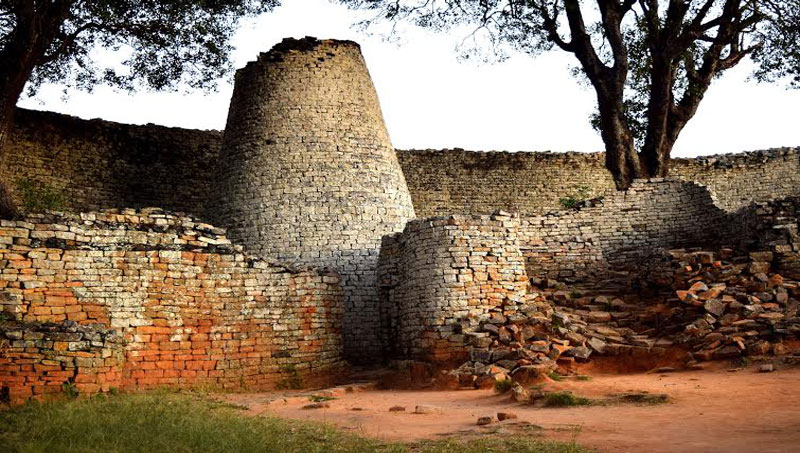The view that agriculture was the mainstay of the economy of Great Zimbabwe does not carry momentum. While on one hand, Great Zimbabwe’s economy featured agriculture, that is, the growing of crops and rearing of livestock, on the other hand, it also was largely characterizing of trade, hunting, mining, iron smelting, tribute payment and raiding. This essay seeks to scrutinize the position that agriculture was the mainstay of the economy of Great Zimbabwe.
Agriculture was a pertinent economic activity of the Great Zimbabwe state. This is because inhabitants of the Great Zimbabwe state grew crops such as sorghum, millet and rapoko which were for their own consumption as well as internal trade. More so, crop cultivation was revamped with the introduction of iron technology which made land clearing and preparation less challenging than in the preceding stone age as well as early European penetration in the Zimbabwe plateau, particularly the Swahili-Arabs who brought maize seeds which became a typical crop grown in the state. Growth of these crops thus necessitated population growth as there was food security, and also enabled internal and external trade as well as a healthy populace. Thus, agriculture was an essential component of the Great Zimbabwe state’s economy.
Agriculture was a pivotal economic activity in the Great Zimbabwe state. This is because livestock production, that is rearing of animals was widely done. It should be clearly indicated that, with the advent of iron technology, the inhabitants of the Great Zimbabwe state, started to domesticate animals. For example, cattle, goats and sheep. These animals were kept for their milk, hides and meat. Meat and milk ensured a healthy population as they are sources of protein while hides could be used in trading and craft work. Therefore, agriculture was an important element of the Great Zimbabwe economy.
However, the economy of Great Zimbabwe also featured trading. This is because there was a need for the exchange of goods for goods in the cashless economy of Great Zimbabwe. Internally, indigenous people inter-exchanged grain, gold and livestock while externally, they bartered hides, minerals and even ivory for cloths, beads and ceramics. The existence of long-distance trade is not only evidenced by Richard Hall’s 1902 findings of Chinese glassware, Persian bowls and Portugal cloth but also the recovery of a coin which was minted by Kilwa’s Al Hassan Ibn Sulaiman in the Great Zimbabwe state. The fact that these were found in the Great Zimbabwe state suggests a form of long-distance economic contact. This, trade was important as it also promoted other primary industries like mining and crop cultivation as the inhabitants (miners and farmers) of Great Zimbabwe felt the increasing demand to supply trade. Therefore, trade was a key feature of the economy of Great Zimbabwe.
Hunting was yet another vital element of the Great Zimbabwe economy. This is because hunting animals for meat had always been part and parcel of the preceding San and Khoikhoi economies and the inhabitants of the Great Zimbabwe state adopted this means of survival. With the coming in of iron technology, Great Zimbabwe state’s hunting improved as hunting tools became sharper thereby reducing one’s time doing the economic activity. Animals such as elephants were increasingly hunted down for their ivory tusks which would be used as trading items. Hence, hunting was a key component of the economy of Great Zimbabwe.
Mining was another essential element of Great Zimbabwe economy. This is because Great Zimbabwe by virtue of being an iron age state, carried out in-depth mineral extraction which would them be utilized in other sectors of the cashless economy. For example, gold would be traded while iron would be smelted and blacksmithed into iron tools which in turn would be used in agriculture. Brian Maregedze notes that, it is against this background, that one can argue that mining was a chief economic activity of the Great Zimbabwe state. Thus, mining was an integral part of Great Zimbabwe state’s economy.
To sum up, this essay explicitly looked into the assertion that agriculture was the main stay of the Great Zimbabwe state. On one hand, agriculture was of some relevance in the Great Zimbabwe state as inhabitants practiced crop cultivation and livestock production which were branches of the state’s economy while on the other hand, the inhabitants of the Great Zimbabwe state largely ventured in trade, mining and hunting for their survival. From the above arguments, one can therefore conclude that the assertion that agriculture was the mainstay of the Great Zimbabwe economy is true to lesser extent.




Latest Comments